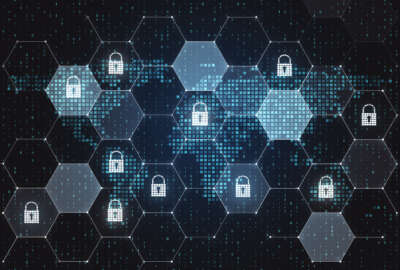

Hubbard Radio Washington DC, LLC. All rights reserved. This website is not intended for users located within the European Economic Area.
Hardly a day of Zoom conferences goes by without someone talking about supply chain security. But the government supply chain is ultimately also the supply chai...
Best listening experience is on Chrome, Firefox or Safari. Subscribe to Federal Drive’s daily audio interviews on Apple Podcasts or PodcastOne.
Hardly a day of Zoom conferences goes by without someone talking about supply chain security. But the government supply chain is ultimately also the supply chain of industry. Deloitte’s managing director for government supply chain and network operations, Melanie Rojas, says the danger there is a hollowing out of the supply chain because of lean purchasing management practices. She joined Federal Drive with Tom Temin to explain.
Interview transcript:
Tom Temin: Mrs. Rojas, thanks for joining me.
Melanie Rojas: Good morning, Tom. Thank you for having me today.
Tom Temin: So your idea in this latest report is that there has been a hollowing out of the supply chain in the private sector and that will affect government. Talk about what you mean by the hollowing out of the supply chain.
Melanie Rojas: So years, quite frankly, decades of robust supply chain management tax practices, right, to reduce costs, and increase efficiency have led to an overall decentralization impacting our overall domestic supplier base, and increasing the risk to our broader supply chain. The best example, I think, is the disruption that we’re seeing as a result of COVID-19, in which the overall fragility of our industrial base has made it apparent that our supply chains aren’t able to meet the population or the needs of our governments.
Tom Temin: So what you’re saying is that the current pandemic situation has really heightened up problems that might be occurring throughout the supply chain for the government and not just for medical supplies — although that was a pretty acute problem. That’d be a good way of putting it?
Melanie Rojas: Yeah, I absolutely agree. As mentioned, these decades of lean supply chain management could add an overall impact on supply. And one of the most significant risks that government is facing is this lack of supply across not just medical equipment and devices, but broader commodities that the government needs to support its mission.
Tom Temin: Well, let’s narrow it down a little bit more. Are you talking about the hollowing out or the reduction or the minimization of supplies? That is to say they didn’t have stockpiles of masks and so forth? Or do you mean the number of contractors available to supply them on short notice?
Melanie Rojas: You’re correct, it’s both. One of the key risks, again, that we see is government’s ability to understand their supply base. And what I mean by that is, historically, governments have relied on their top tier suppliers, and their top tier suppliers ability to deliver on their mission requirements. Today, it’s incredibly important for the government to understand beyond those top tier suppliers, who are the lower tier suppliers at tiers five and six that are critical to that broader supply chain. And in cases like COVID, and or any other supply chain disruptions could cause a material break or disconnect in their overall ability to obtain those goods.
Tom Temin: I guess perhaps one of the reasons underlying this is that most government procurements take place over a fairly leisurely time period. So if I’m buying, I don’t know some type of IT hardware, that requirement could be a year in development. And then the procurement cycle could be another year of taking bids, and then evaluating them and then making an award and then dealing with a protest. And at some point, a couple years later, stuff starts to get delivered. But that’s not a very good model for the emergency situation that happened when the pandemic arrived. Fair way to characterize it?
Melanie Rojas: I agree. And that it’s critical call for government to have access to more than single sources of supply. The leading organizations are not only taking steps to respond to the current disruptions, but are expanding their best practices to increase sources of supply to prepare for inevitable future disruption. And one of the best ways to do that, again, is to dive into eliminating that supplier network to increase your access to multiple providers.
Tom Temin: So what are some steps the government can do to maintain a more robust supplier base or a more resilient supplier base when requirements are such that they may not need all of that resiliency in depth?
Melanie Rojas: Supplier base specifically, it goes back to increasing visibility into that supply chain. Conducting additional due diligence beyond that tier one to understand the interrelated relationships that exist within their supply chain. This allows them to be better positioned to identify vulnerabilities and risks. And what we’re seeing in the market from leading agencies is an increased focus on utilizing cutting edge technologies such as artificial intelligence, robotics, process automation, and advanced analytics to help them achieve this visibility.
Tom Temin: And what about the issue that, at least in the case of a lot of these medical supplies, there was plenty of it around, but it was all from China.
Melanie Rojas: Well, and it goes back to my point about putting robust supply chain practices in place that would have identified for agencies early that they had a single reliance on a source of supply or source of supply in a single geography. So one of the key things that we do with our government clients, right, is help them identify other suppliers that have like capability and or satellite offices and other geographies that in times of disruption would enable the client to be agile and flexible enough to shift the focus on their supply chain.
Tom Temin: Now, you have outlined four basic pillars that Deloitte says are essential to establish and maintain a secure supply chain. Just briefly go over those pillars and what those are all about.
Melanie Rojas: Absolutely. So the four pillars that we recommend agencies focus on to increase their supply chain resilience, or visibility, flexibility, collaboration and control. We’ve spent quite a bit of time diving into visibility and the need to do due diligence beyond your tier one suppliers. I’ll shift and talk a little bit about flexibility. And flexibility is about having the ability to quickly adapt to disruptions without significantly increasing operational costs or risk commission. And this goes again, back to the principle of having a detailed understanding of each of the nodes within your supplier networks and the relationship so that you’re well positioned to adjust in times of disruption. The third pillar or collaboration, particularly in government, isn’t reflection that the supply chain oftentimes requires integration across multiple partners, right, government, eight and local, as well as our broader communities. And the last pillar, control. This largely focuses on sound risk management processes from a supply chain perspective, enabling the government to identify early potential vulnerabilities and put the proper tracking and risk management processes in place to get ahead of them before they occur.
Tom Temin: And are any agencies or departments already good at this? I would think FEMA would be one that comes to mind or some elements of the Defense Department.
Melanie Rojas: Leading agencies in the federal government, as we said, have already begun to implement processes in each of these areas. In fact, recently, we worked with the National Security Agency to conduct additional due diligence in a critical mission area with the resulting information enabling them to clearly understand their foreign supplier risk and determine alternative sourcing strategies.
Tom Temin: And what do you make of on the ventilator front? The national effort that happened some months ago now it seems like an eternity ago, where Ford Motor Company and other people that were manufacturers but didn’t make ventilators were pulled into the ventilator market? Is that something that offers lessons learned?
Melanie Rojas: Absolutely. This is a reflection of the importance of understanding, again, the ability of the US industrial base to not only deliver the needs of our population today, but the agility that they have to quickly pivot to support manufacturing and increase the capacity in times of disruption. Having that sound supplier due diligence and elimination upfront. Understanding the breadth of the supplier base ultimately is going to position our government to pivot more rapidly in times of disruption and industry to be in a position to support.
Tom Temin: Melanie Rojas is managing director for government supply chain and network operations at Deloitte. Thanks so much for joining me.
Melanie Rojas: Thank you, Tom.
Copyright © 2024 Federal News Network. All rights reserved. This website is not intended for users located within the European Economic Area.
Tom Temin is host of the Federal Drive and has been providing insight on federal technology and management issues for more than 30 years.
Follow @tteminWFED



